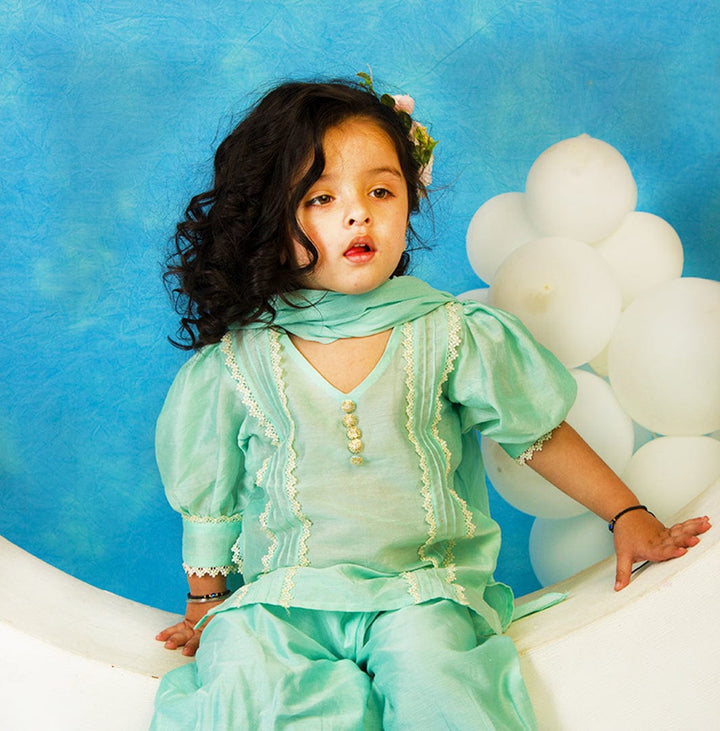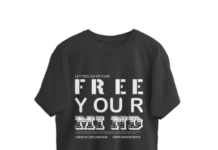In a country as diverse as India, ethnic wear is more than just clothing—it’s a reflection of cultural heritage, traditions, and values. For little girls, ethnic wear is a delightful way to connect with their roots while looking adorable.
Whether it’s for festivals, weddings, or special family gatherings, choosing the perfect ethnic wear for girls can be both exciting and overwhelming, given the wide range of options available.
This klistel.com ultimate guide will help you navigate the beautiful world of ethnic wear, ensuring your daughter is dressed in the most elegant and comfortable attire for every occasion.
- Understanding Different Types of Ethnic Wear
Indian ethnic wear for girls is incredibly diverse, offering numerous styles that vary by region, culture, and occasion. Here’s an overview of the most popular types:
- Lehenga Choli: A traditional outfit consisting of a flared skirt (lehenga), a blouse (choli), and a dupatta. Lehengas are perfect for weddings, festivals, and other grand celebrations. They come in various fabrics, from silk and brocade to chiffon and georgette, often embellished with intricate embroidery, mirror work, or sequins.
- Salwar Kameez: This classic ensemble includes a long tunic (kameez), loose-fitting pants (salwar or churidar), and a dupatta. The salwar kameez is versatile and can be worn for both casual and formal occasions. Styles range from simple cotton sets for daily wear to heavily embroidered versions for special events.
- Anarkali Suit: Known for its flared silhouette, the Anarkali suit features a long, frock-style top paired with a churidar or leggings. It’s a popular choice for weddings and festive occasions, offering a regal and elegant look.
- Saree: For older girls or special events, a saree can be a stunning choice. A saree is a long piece of fabric draped elegantly around the body, paired with a blouse and petticoat. While traditionally worn by women, young girls can also wear specially designed sarees that are easier to drape.
- Ghagra Choli: Similar to a lehenga choli but often with a more playful and vibrant design, the ghagra choli is ideal for festive occasions like Navratri or Diwali. It’s a comfortable yet stylish option for girls of all ages.
- Kurti with Palazzo or Skirt: A modern take on traditional wear, this outfit pairs a short or long tunic (kurti) with wide-legged pants (palazzo) or a skirt. It’s a great option for casual outings, festive gatherings, and even school functions.
- Pavadai Sattai: A traditional South Indian outfit for young girls, this consists of a long skirt (pavadai) and a blouse (sattai), often paired with a dupatta. It’s typically made from silk or cotton, with beautiful zari work or embroidery.
Each of these styles has its own charm and can be chosen based on the occasion, the weather, and your child’s comfort level.
- Selecting the Right Fabric
The fabric of the ethnic wear is crucial in determining comfort, appearance, and appropriateness for the occasion. Here’s how to choose:
- Cotton: Ideal for everyday wear, casual outings, and summer festivals. Cotton is breathable, comfortable, and easy to maintain. Look for cotton outfits with traditional prints like block prints, bandhani, or kalamkari for a blend of style and comfort.
- Silk: A luxurious choice for weddings, festivals, and formal events. Silk outfits, such as Kanjeevaram or Banarasi lehengas and sarees, are known for their richness and elegance. However, silk can be delicate and requires careful handling.
- Georgette/Chiffon: Lightweight and flowy, these fabrics are perfect for parties and festive occasions. They drape beautifully and add a touch of grace to any outfit. Georgette and chiffon outfits are often adorned with embroidery, sequins, or beads.
- Velvet: A warm and plush fabric, ideal for winter weddings or evening events. Velvet outfits are rich in texture and add a regal touch to ethnic wear. However, they can be heavy, so it’s important to ensure your child is comfortable.
- Brocade: A richly woven fabric with intricate patterns, often used in lehengas and sarees. Brocade is perfect for festive occasions and weddings, offering a traditional and opulent look.
- Linen: A lightweight and breathable fabric, suitable for summer and casual wear. Linen outfits often have a natural, earthy appeal and are great for a minimalist yet stylish look.
Choosing the right fabric depends on the occasion, the season, and your child’s comfort. For example, cotton and linen are best for summer, while silk and velvet are more suited for winter or special events.
- Considering the Occasion
The occasion plays a significant role in determining the type of ethnic wear you choose for your daughter. Here’s a breakdown of suitable options for various events:
- Weddings: For weddings, opt for elaborate outfits like lehenga cholis, Anarkali suits, or sarees in rich fabrics like silk, brocade, or velvet. Look for outfits with intricate embroidery, zari work, or sequins to add a touch of grandeur.
- Festivals: Festivals like Diwali, Eid, or Navratri call for vibrant and colorful outfits. Ghagra cholis, Anarkali suits, or salwar kameez sets in bright colors and festive patterns are perfect. Accessories like bangles, jhumkas, and bindis can enhance the festive look.
- Casual Outings: For more casual events, like family gatherings or school functions, go for comfortable yet stylish outfits like kurtis paired with palazzos, skirts, or leggings. Cotton or linen fabrics with subtle prints or embroidery are ideal.
- School Events: If your child needs to wear ethnic wear for a school event, choose something that’s easy to move in, like a simple salwar kameez or a kurti with leggings. Avoid heavy fabrics and embellishments to ensure comfort throughout the day.
- Religious Ceremonies: For religious events or pujas, traditional outfits like pavadai sattai, simple sarees, or salwar kameez in soft colors and minimal embellishments are appropriate. Fabrics like cotton or silk are preferred for their simplicity and elegance.
- Prioritizing Comfort and Fit
No matter how beautiful an outfit is, if it’s not comfortable, your child won’t enjoy wearing it. Here are some tips to ensure a good fit and comfort:
- Comfortable Kameez or Choli: Ensure the top piece (kameez, choli, or kurti) fits well around the shoulders and chest, with enough room for movement. It should not be too tight or too loose, and the fabric should be soft against the skin.
- Proper Length: The length of the lehenga, salwar, or skirt should be appropriate for your child’s height. Ensure it’s not too long to avoid tripping or dragging on the ground.
- Easy-to-Wear Designs: For younger children, consider outfits with elastic waistbands, zip closures, or easy-to-tie drawstrings. Avoid overly complicated designs that might require constant adjustment.
- Light Dupatta: If the outfit includes a dupatta, choose one that’s lightweight and manageable for your child. A dupatta that’s too heavy or long can be cumbersome.
- Breathable Fabrics: For daily wear or hot weather, opt for breathable fabrics like cotton or linen to keep your child cool and comfortable.
- Playing with Colors and Patterns
Ethnic wear is known for its vibrant colors and intricate patterns. Here’s how to choose the best ones for your daughter:
- Bright and Bold: For festivals and weddings, don’t shy away from bright colors like red, orange, pink, yellow, and green. These colors are festive and look great in traditional outfits.
- Soft and Subtle: For more subdued occasions, pastel shades like peach, mint green, lavender, or light blue can be elegant and charming.
- Traditional Patterns: Look for traditional Indian patterns like paisleys, peacocks, floral motifs, or geometric designs. These add an authentic touch to the outfit.
- Mix and Match: Don’t be afraid to mix and match patterns and colors. A printed kameez with a solid salwar or a contrasting dupatta can create a unique and stylish look.
- Accessorizing the Ethnic Look
No ethnic outfit is complete without the right accessories. Here are some must-haves:
- Jewelry: For younger girls, opt for simple jewelry like small earrings, bangles, or a delicate necklace. For special occasions, you can add a maang tikka, anklets, or a waist belt (kamarband).
- Footwear: Pair the outfit with traditional footwear like juttis, mojaris, or sandals. Ensure the shoes are comfortable and fit well.
- Hair Accessories: Floral hairbands, embellished clips, or even fresh flowers can enhance your child’s ethnic look. For older girls, a simple braid with a gajra (flower garland) adds a traditional touch.
- Bindi: A small bindi can add the finishing touch to any ethnic outfit, especially for festive occasions.
- Involving Your Child in the Selection Process
Finally, involve your daughter in the selection process. Let her express her preferences for colors, styles, and patterns. When children have a say in their outfits, they’re more likely to feel confident and happy wearing them. Plus, it’s a wonderful way to bond and teach them about cultural traditions.
Conclusion
Choosing the best ethnic wear for girls is a delightful journey that blends tradition, style, and comfort. By considering the type of outfit, fabric, occasion, fit, colors, and accessories, you can ensure your daughter looks and feels her best in any ethnic attire. Whether it’s for a grand wedding, a festive celebration, or a casual family gathering, the right ethnic wear will make your little girl shine. With this guide in hand, you’re well-equipped to explore the world of ethnic fashion and find the perfect outfit for your little princess.




